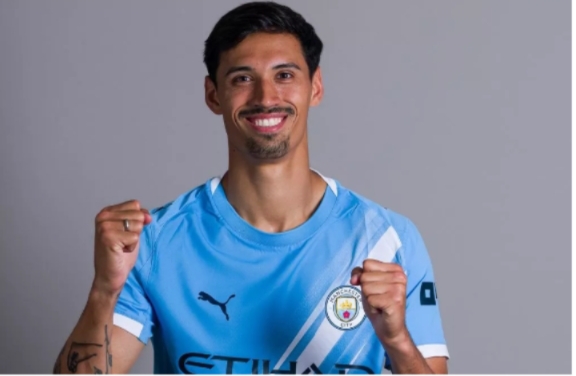
The Tijjani Reijnders Trait That Could Help Transform Manchester City’s Midfield – ‘He’s So Good’
Manchester City’s midfield has long been the fulcrum of Pep Guardiola’s dynastic success at the Etihad. From David Silva and Yaya Touré to Kevin De Bruyne and Rodri, Guardiola has engineered a midfield engine room defined by intelligence, control, and tactical nuance. But with the core group aging and questions surrounding the long-term future of several midfielders, there’s an increasing sense that the next phase of evolution is imminent.
Enter Tijjani Reijnders — the Dutch international whose rise at AC Milan and with the Netherlands has drawn comparisons to elite box-to-box midfielders of past and present. Amid growing links to Premier League clubs and whispers of Guardiola’s admiration, one trait in particular stands out that could make Reijnders a transformational asset for Manchester City: his press-resistant progression under pressure.
The Trait: Press-Resistant Ball Progression
Tijjani Reijnders’ ability to receive, turn, and carry the ball under pressure is not just a technical strength — it’s a tactical weapon. At Milan, Reijnders has consistently operated in a hybrid role, often starting deep but given freedom to drive forward, thanks to his unique ability to evade pressing traps. He blends the elegance of a metronome passer with the dynamism of a line-breaking carrier.
His press resistance isn’t just about tight control or dribbling flair. It’s about composure, scanning, spatial awareness, and the knack for turning high-pressure situations into transition-launching opportunities. This is precisely the kind of skillset Guardiola covets — and one that has grown increasingly valuable in a Premier League where high-intensity pressing systems (think Liverpool, Arsenal, and even Aston Villa under Unai Emery) dominate.
In the words of Dutch manager Ronald Koeman, “He’s so good at keeping the game calm when others are rushing. That’s rare.” For a City side that often faces the dual challenge of breaking down low blocks and resisting transitional threats, a midfielder like Reijnders could prove pivotal.
A City Midfield in Flux
It’s no secret that Manchester City are entering a transitional phase in midfield. Ilkay Gündoğan’s departure to Barcelona left a gap in terms of intelligence and leadership. Kevin De Bruyne, though still capable of moments of magic, is 33 and increasingly managed carefully due to recurring injuries. Mateo Kovačić brought stability, but not dynamism. And while Phil Foden has flourished in more central roles, he’s best used as an advanced operator rather than a midfield orchestrator.
Rodri remains the immovable pillar, but when he’s unavailable, City have looked surprisingly vulnerable — as seen in the losses during his suspension in the 2023–24 season. Guardiola has tried plugging that gap with different profiles — Kalvin Phillips, Rico Lewis, even John Stones stepping into midfield — but a true partner for Rodri, or someone who can offer a different tempo when needed, has yet to emerge.
This is where Reijnders fits so intriguingly. His profile — somewhere between a deep-lying playmaker and an all-action number 8 — offers versatility, control, and a touch of flair. He doesn’t need to dominate the ball like De Bruyne or dictate like Rodri, but he can link phases, glide through pressure, and set the rhythm when the team needs to breathe.
Tactical Fit Under Guardiola
What sets Guardiola’s sides apart is not just their individual quality, but how roles are defined and tailored. Reijnders, in many ways, fits the mould of the interior midfielder that Guardiola idealizes: someone comfortable in tight zones, adept at rotating with others, and capable of operating between the lines.
Tactically, Reijnders could slot into a left-sided interior role (akin to Gündoğan’s position in City’s treble-winning season), or even as a double pivot next to Rodri in tougher away matches or Champions League nights. His natural two-footedness allows him to receive on either side, and his decision-making under pressure would be an asset when City build from deep against high-pressing teams.
Another often-overlooked trait is his off-ball movement. Reijnders doesn’t just progress the ball — he progresses the game. He makes sharp third-man runs, drops intelligently to support the build-up, and understands positional play. He is not a player who crowds zones. He stretches them, complements them.
In matches where City often dominate possession and the tempo dips, Reijnders could inject urgency with his forward drives. Conversely, in more chaotic contests, his composure under pressure would help restore structure. Guardiola often looks for players who give him tactical flexibility without sacrificing control — Reijnders is precisely that.
Statistical Backing
The underlying numbers support the eye test. In the 2023–24 Serie A season, Reijnders averaged:
6.1 progressive carries per 90
3.4 passes into the final third per 90
2.5 successful take-ons per 90 (a top mark for central midfielders)
88% pass completion, even under high pressure
These numbers underscore his ability to move the ball upfield in multiple ways — whether by dribbling, carrying, or passing. Moreover, his defensive contribution (1.9 tackles and 1.5 interceptions per 90) shows a willingness to engage in the dirty work — crucial in a Guardiola setup that emphasizes defensive responsibility from all midfielders.
Building for the Next Era
As Manchester City looks to refresh and maintain its dominance domestically and in Europe, the profile of new recruits becomes even more critical. Guardiola’s squads are not just built for now; they’re built for evolution. Players like Reijnders offer continuity and reinvention.
In Reijnders, City would not just be signing a talented midfielder — they’d be investing in a player who bridges the gap between past and future. He could grow into a long-term partner for Rodri, offer rotation for De Bruyne, or even take on a more central leadership role as time progresses.
There’s also the intangible quality: personality. Reijnders exudes quiet confidence — never rushed, never rattled, always in control. That serenity in the middle of chaos is something Guardiola prizes highly. When Pep says a player is “so good,” it’s not about showreels — it’s about trust. Trust to execute the plan, trust to adapt, and trust to make the right decision in real time.
Conclusion
Tijjani Reijnders may not yet be a household name among Premier League fans, but those who watch closely know his talent is undeniable. In a City side that thrives on rhythm, control, and adaptability, Reijnders’ press-resistant progression is a trait that could elevate the midfield to its next iteration.
If Manchester City are indeed looking for the next piece to complement and eventually succeed the likes of De Bruyne and Gündoğan, they could do far worse than betting on a midfielder who thrives under pressure, plays with purpose, and makes the complex look simple.
In short: he’s so good — and maybe just good enough to help redefine City’s midfield all over again.

Leave a Reply